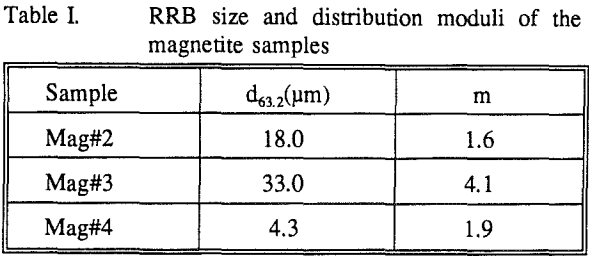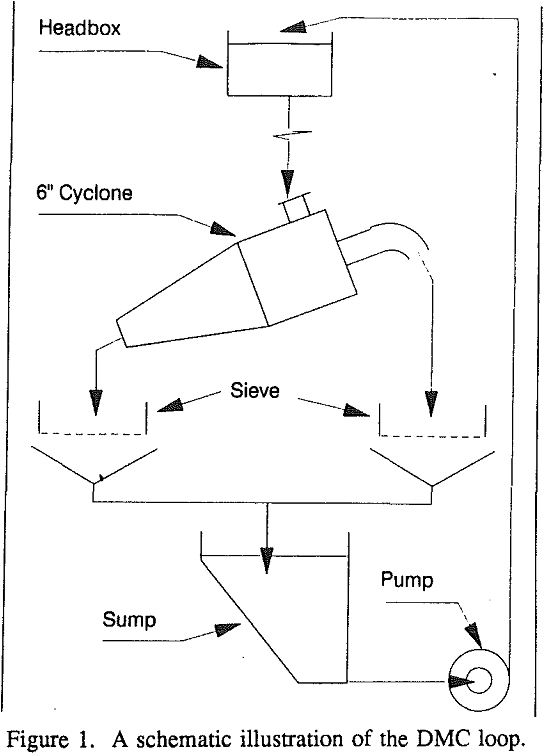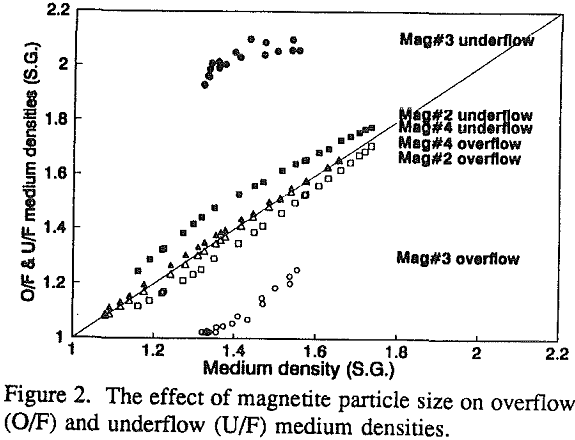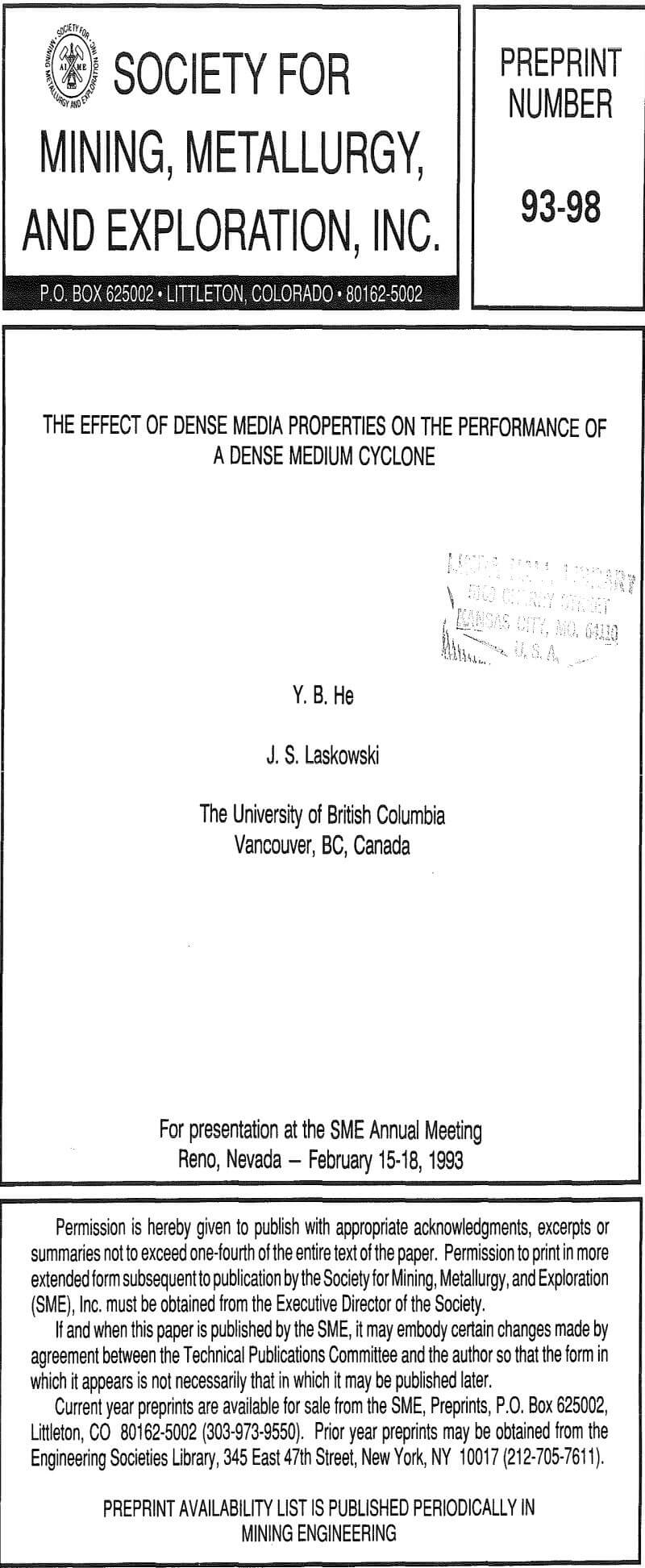The effect of the stability and rheological properties of magnetite dense medium on the separation performance of a 6″ dense medium cyclone (DMC) is studied with the use of fine density tracers. The tests in which different size fractions of magnetite are used to prepare the dense media reveal that at low medium densities (<1.5 s.g.), the best separation is achieved when using the magnetite with intermediate particle sizes (d63.2=18 µm). At medium densities above 1.5 s.g., however, it is beneficial to use coarser magnetite.
It should be noted that many of the above conclusions were drawn from a limited data or within a narrow variable range. A different picture might probably be obtained if an extended range of the variables was explored. In the present investigation, an extensive series of tests was carried out to examine the effect of the two major parameters: magnetite particle size and medium density on the DMC performance.
Material and Experimental
The size distribution of the magnetite samples used in this investigation was varied from micronized-magnetite with d63.2=4.3 µm to a very coarse magnetite with d63.2=33.0 µm (for commercial magnetite, d63.2 = 30.5 µm). The tests were conducted over a wide medium density range from 1.20 to 1.70 s.g. A broad range of magnetite sizes and medium densities coupled with the use of fine density tracers should provide a more close insight into the interrelations among various variables.

Results and Discussion
The proper control of medium stability is very important to achieve a satisfactory separation efficiency in a DMC. Size classification experienced by the dense medium in the cyclone is reflected by the disparity between the cyclone overflow and underflow medium densities. The Mag 3 dense medium was highly unstable; it experienced a strong classification with a highly concentrated underflow and a very diluted overflow. As will be shown later, the extremely low stability was responsible for the poor cyclone performance.
The density differential between cyclone underflow and overflow is usually taken to characterize the medium stability. It is a composite effect of the medium properties and cyclone operating conditions such as cyclone diameter and inlet pressure, and is, therefore, considered a parameter describing the dynamic stability of the medium.
The DMC separation performance was found to be significantly affected by the magnetite particle size. The Ep values with micronized-magnetite Mag 4 and the intermediate Mag 2 tended to increase with the increase in medium density. A more dramatic increase in Ep value with Mag 4 was observed at medium density exceeding 1.5 s.g. This, obviously, is a consequence of the increased medium viscosity. With the coarse magnetite (Mag 3), however, the trend was reversed; the Ep value decreased with increasing medium density.
Over the high medium density range (>1.5 s.g.), the medium rheology emerged as a dominant factor in controlling the cyclone performance. As a result, it became desirable to use coarser magnetite to achieve a better separation efficiency at high medium densities.
The separation cutpoint, δ50, and the separation efficiency, Ep, are the two most important operation parameters in gravity separation. Fluctuation in the δ50 results in the misplacement of coal and gangue particles and, consequently, reduces the overall separation efficiency.
The effect of medium stability on δ50 (or cutpoint shift) can be explained via its relationship with the medium density gradient inside the cyclone. Due to the existence of the medium density gradient inside the cyclone, the δ0 normally deviates from the feed medium density resulting in a cutpoint shift. With the cyclone under normal running conditions, the δ0 is usually higher than that of the feed medium. So does the δ50. As the medium stability deteriorates, the δ0, and consequently the δ50. It is obviously possible that under certain circumstances, the value of δ0 may become lower than the feed medium density. This would result in a δ50 lower than the feed medium density and a negative cutpoint shift.
Medium stability and rheology have a joint effect on the performance of a DMC. As a result, two opposite trends are observed in the relationship between separation efficiency and medium density. With fine magnetite, the effect of medium rheology plays a major role: the separation efficiency deteriorates when the medium density is increased. With coarse magnetite, however, the effect of medium stability becomes more important. An increase in medium density results in a better separation efficiency.



